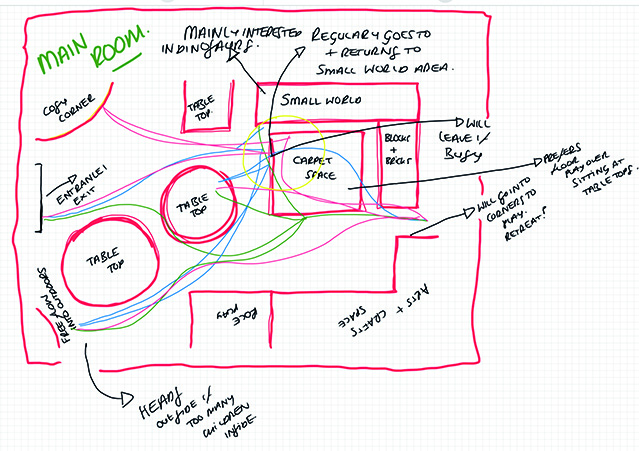
Many neurodivergent and disabled children experience interventions that can predominately be adult-directed or prescriptive. This can lead to practice that focuses on training the child out of their neurodivergence. We wanted to offer ideas, but we also wanted to ensure that [we] took a neurodiversity-informed and affirming approach.
Our use of ‘neurodivergent’ is an umbrella term encompassing people who process, learn and/or behave differently from what would be considered typical. Autism, attention deficit hyperactivity disorder (ADHD) and dyslexia are generally considered as neurodivergence.
PLAY MAPPING
 Neurodivergent children can appear to move quickly from place to place. Play mapping enables us to follow the play flow and look for patterns.
Neurodivergent children can appear to move quickly from place to place. Play mapping enables us to follow the play flow and look for patterns.
Register now to continue reading
Thank you for visiting Nursery World and making use of our archive of more than 35,000 expert features, subject guides, case studies and policy updates. Why not register today and enjoy the following great benefits:
What's included
-
Free access to 4 subscriber-only articles per month
-
Unlimited access to news and opinion
-
Email newsletter providing activity ideas, best practice and breaking news
Already have an account? Sign in here









